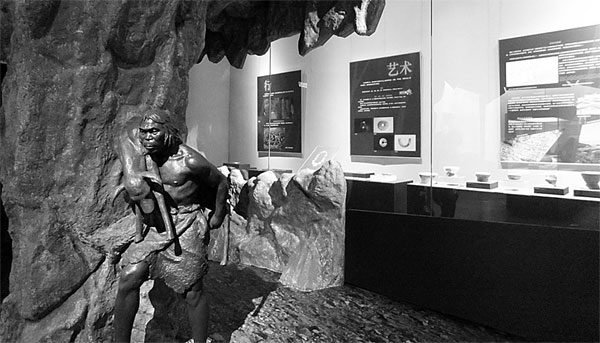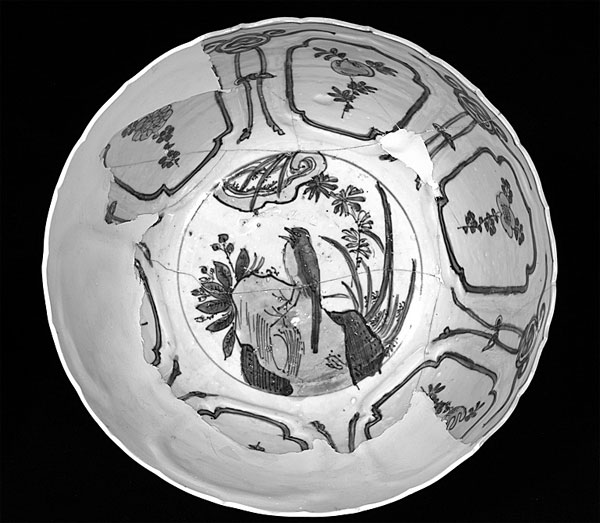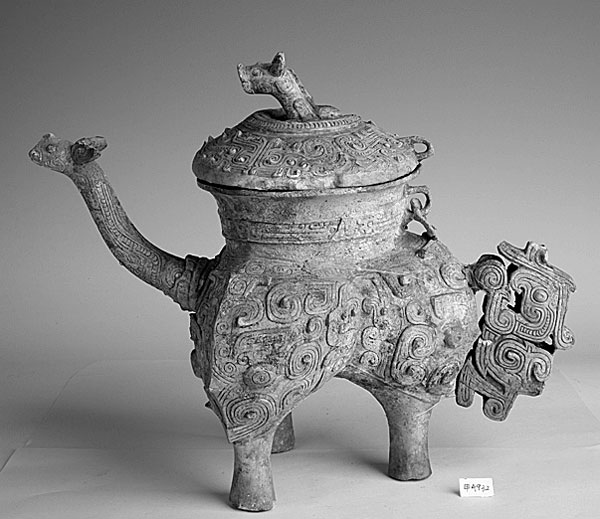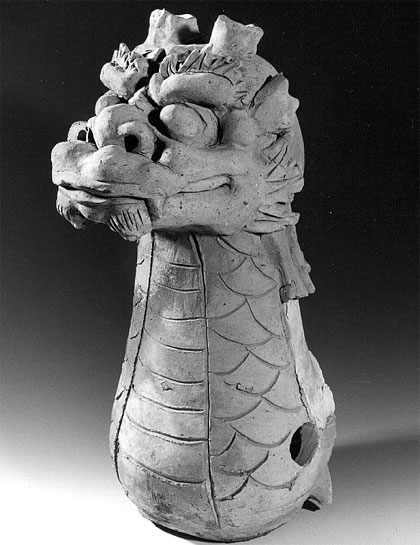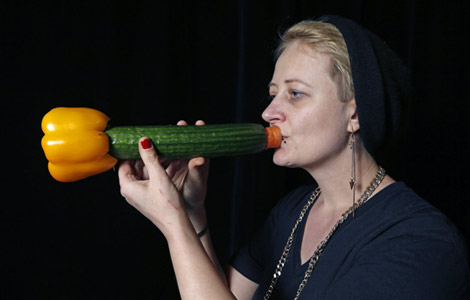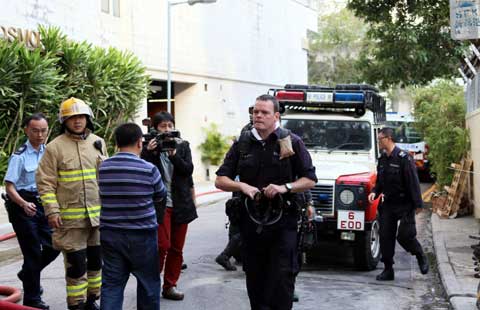Shattering a stereotype
Updated: 2014-02-09 08:40
By Xu Jingxi (China Daily)
|
|||||||||||
A joint exhibition at Guangdong Museum recreates the history of the Lingnan area, helping to dispel a barbaric misconception in the process, reports Xu Jingxi in Guangzhou.
More than 30 museums in Guangdong province and its neighboring special administrative regions Hong Kong and Macao have selected 560 cultural relics in total from their collections. They are being displayed in the ongoing exhibition at Guangdong Museum to unveil the long, splendid history of Lingnan.
Lingnan is a geographic area referring to lands in the south of China's Nanling Mountains and covers today's Guangdong and Hainan provinces and Guangxi Zhuang autonomous region, Hong Kong, Macao and part of Hunan and Jiangxi provinces.
|
The exhibition tells Lingnan's history from Neolithic times to the Qing Dynasty. Xu Jingxi / China Daily |
|
A blue-and-white porcelain bowl of the late Ming Dynasty. |
|
A bronze pot of the Western Zhou Dynasty. |
|
A dragon-head architecture component of the Southern Han Dynasty. Photos Provided to China Daily |
Fang Jianhong, head of the provincial department of culture of Guangdong, said at the exhibition's opening ceremony early in January that it aims at developing a love for Lingnan and Chinese culture among local people and strengthening their sense of national pride.
"The exhibition integrates the archeological resources in Guangdong, Hong Kong and Macao to reconstruct the history of the Lingnan area and showcases the latest archeological achievements," Fang said. "It has also expanded the cultural cooperation among the three places."
It is the third big joint exhibition since Guangdong, Hong Kong and Macao established the system for their cultural cooperation in 2002. In the past 14 years, they have explored cooperation in six areas including performing arts, cultural information, museums, libraries, intangible cultural heritages' protection and the creative industry.
The first big joint exhibition was in 2006, displaying relics that incorporate both artistic styles in the East and the West and thus prove the cultural communication between China and the Western countries in ancient and modern times. The second was in 2012-13, taking visitors back to the glorious days of China when the exquisite art was exported to the West by seaway.
The latest and largest joint exhibition tells Lingnan's history over a wide time span from Neolithic times to the Qing Dynasty (1644-1911).
In the first section about the prehistoric age, the curator smartly categorizes the exhibits into four aspects - clothing, eating, housing and traveling - to give visitors an interesting glimpse of their ancestors' daily life. With detailed text illustrations, people will be amazed by their ancestors' wisdom of living. For example, sharpened pointed stones used as sewing needles.
Palaces in the Lingnan area started appearing in the Han Dynasty (206 BC-AD 220). In this section, the exhibition tries to "rebuild" the magnificent Nanyue Kingdom Palace with construction materials such as eaves tiles, furniture and decorations inside the palace and ceramic models that vividly reproduce the scenes in ancient people's lives, such as farming in the fields.
The third section unfolds the long history of Chinese china production, from the prehistoric age's crude pottery to the celadon and ceramic white ware in the Tang (AD 618-907) and Song (960-1279) dynasties and to the colorful china in the Ming (1368-1644) and Qing dynasties.
While marveling at the beauty of relics, visitors can also play the role of detective to trace evidence of the communication between Lingnan and the Central Plain in ancient times, which is fun, Chow Hing-wah, curator of the intangible cultural heritage unit of Hong Kong Heritage Museum, advises.
Central Plain, or Zhongyuan, refers to the area on the lower reaches of the Yellow River that is believed to have formed the cradle of Chinese civilization. On the contrary, the Lingnan area used to be called the "southern barbarian land".
"If you look carefully, you will discover that the communication between Lingnan and Central Plain can be dated back to at least 3,000 years," Chow says. "For instance, we can infer it from the archeological finds in Hong Kong of pottery tripods during the Eastern Han Dynasty (AD 25-220), which was common in Han culture in Central Plain, that Han culture had been already introduced into the Lingnan area almost 2,000 years ago.
"The exhibition can correct people's stereotype that Lingnan was a 'southern barbarian land', with the exhibits of daily tools and handicrafts showcasing the ancient civilization in Lingnan," he adds.
The Hong Kong curator compares archeology to playing jigsaw, piecing relics together to represent the history for the public. It is a time and effort-consuming project. The exhibition's fourth section exposes visitors to the advanced techniques in archeology.
"Guangdong, Hong Kong and Macao are leading the country in the field of underwater archeological technology," Wei Jun, curator of Guangdong Museum, says when pointing to the state-of-the-art equipment in the cabinet.
Children will be excited to see the huge setting in which a mannequin dressed as a diver hunts for archeological treasures under the sea.
The museum has also designed a game for kids to play the role of an archeologist digging out relics in the sand.
Visitors of any age will have fun making rubbings of the intriguing textures of some relics at the interactive event's location.
In March, there will be public lectures on the first three Saturdays of the month, given by Guangdong archeologists about some of the biggest finds in the province in recent years.
The exhibition will tour Hong Kong and Macao after the Guangdong debut.
"People in Guangdong, Hong Kong and Macao have the same roots. It's meaningful to review our connections in the past," Tsang Tak-sing, secretary for the Home Affairs Bureau of Hong Kong, says.
Contact the writer at xujingxi@chinadaily.com.cn.
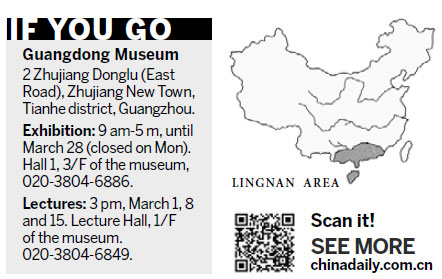
(China Daily 02/09/2014 page9)
Today's Top News
Xi attends Sochi Olympic opening ceremony
Suspected hijacker seized
China changing the way it drinks
Senate confirms Baucus as ambassador to China
More Chinese enjoy festival overseas
Shanghai kindergartens to promote local dialect
Faulty Chinese part forces major Aston Martin recall
Daily stress taking toll on life at home: experts
Hot Topics
Lunar probe , China growth forecasts, Emission rules get tougher, China seen through 'colored lens', International board,
Editor's Picks

|

|
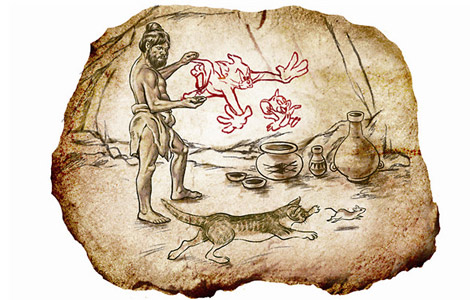
|
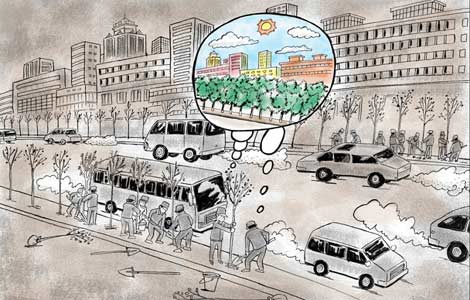
|

|
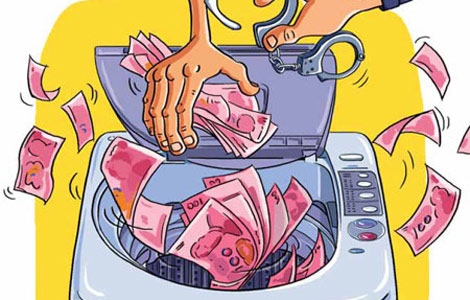
|
